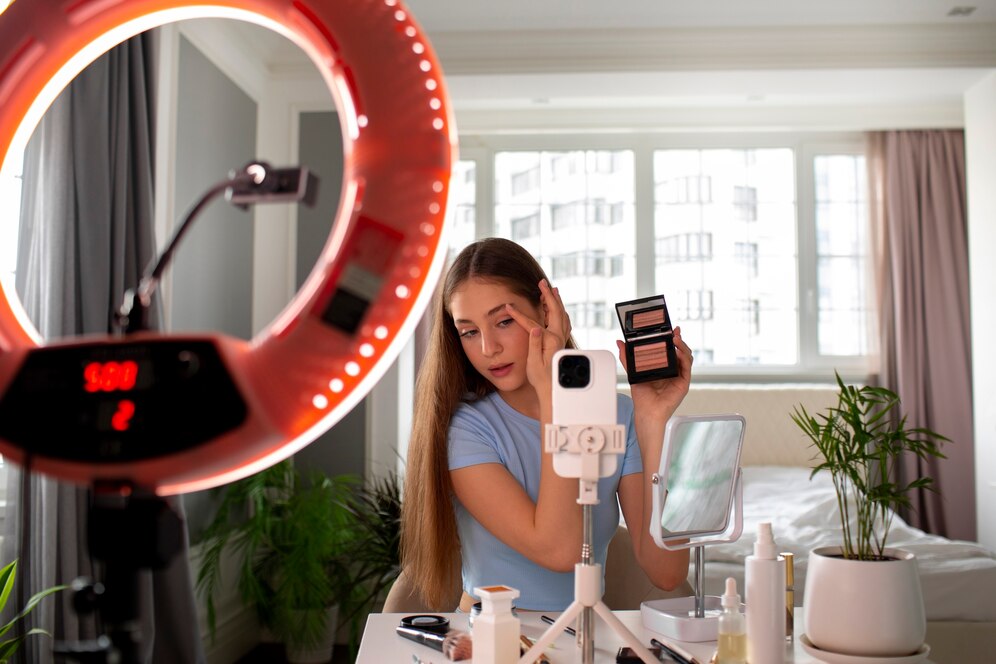The influencer game is changing—and the new stars of Instagram, TikTok, and YouTube don’t even exist. Meet the virtual influencers: hyper-realistic, computer-generated personalities with curated aesthetics, crafted backstories, and massive fan followings. These digital entities are landing brand deals, dropping music, and sparking conversations around what it means to be “real” online. But as they rise in popularity, one question looms: are virtual influencers replacing real ones?
What Are Virtual Influencers?
Virtual influencers are CGI characters designed to look and act like real people. They have names, personalities, and interests—and often their own Instagram accounts, filled with fashion shoots, brand collaborations, and even relationship drama. Some of the most well-known include:
-
Lil Miquela – A Brazilian-American “19-year-old robot” who has partnered with Prada and Calvin Klein, dropped music tracks, and amassed millions of followers.
-
Imma – A pink-haired Japanese virtual model known for her fashion-forward aesthetic and work with brands like IKEA and Valentino.
-
Shudu – Touted as the world’s first digital supermodel, created by British photographer Cameron-James Wilson.
What separates virtual influencers from animated characters or avatars is how human they appear—not just in looks, but in behavior, emotion, and the illusion of a personal life.
Why Are Brands Choosing Virtual Over Human?
The appeal is simple: total control. Virtual influencers don’t get tired, don’t age, don’t get caught in scandals (unless scripted), and can be perfectly aligned with brand messaging. For companies, this means:
-
No risk of PR mishaps
-
100% brand-safe content
-
Scalability across campaigns and languages
-
Limitless customization
In a world where authenticity is currency, it might seem odd that audiences are connecting with “fake” influencers—but studies show that audiences engage with virtual influencers just as much, if not more, than real ones. It’s not just about who’s real anymore—it’s about who’s relatable, visually captivating, and always online.
Do Audiences Really Buy Into Virtual Personas?
Surprisingly, yes. Many followers of virtual influencers know they’re not real—but that doesn’t seem to matter. These influencers often embody idealized personalities that tap into aesthetic trends, social values, or aspirational lifestyles. The storytelling is strong, the visuals are polished, and the mystery around their creation only fuels intrigue.
Some fans even report emotional attachment, much like with fictional characters in books or shows. Others treat it like performance art—a blend of digital fashion, tech innovation, and narrative design.
The Ethical Debate
With the rise of virtual influencers comes a wave of ethical questions:
-
Transparency: Should creators always disclose that an influencer is virtual?
-
Diversity & representation: Is it ethical for brands to create digital versions of marginalized identities rather than work with real people?
-
Job displacement: Are virtual influencers taking opportunities away from real creators?
Critics argue that CGI characters can perpetuate unrealistic beauty standards, while also blurring the line between fiction and reality in a way that could lead to manipulation. When a digital personality starts endorsing products, or even political messages, it raises concerns about authenticity, accountability, and trust.
Are Real Influencers Being Replaced?
Not yet—but the landscape is definitely shifting.
Virtual influencers aren’t here to replace real people, but they’re creating a new class of competition. In many ways, they’re shaping what the next generation of influencer culture looks like: hyper-curated, always available, algorithm-friendly, and deeply intertwined with AI and design.
Instead of being a threat, some real influencers are embracing the trend—partnering with virtual counterparts, using AR filters, or even creating digital clones of themselves. The future may lie in collaboration, not competition.
The rise of virtual influencers marks a turning point in how we engage with digital personas. They challenge our definitions of authenticity, influence, and identity in the online world. Whether they’re a fleeting trend or the future of marketing, one thing is clear: we’re witnessing the next evolution of digital influence—and it doesn’t have a heartbeat.

